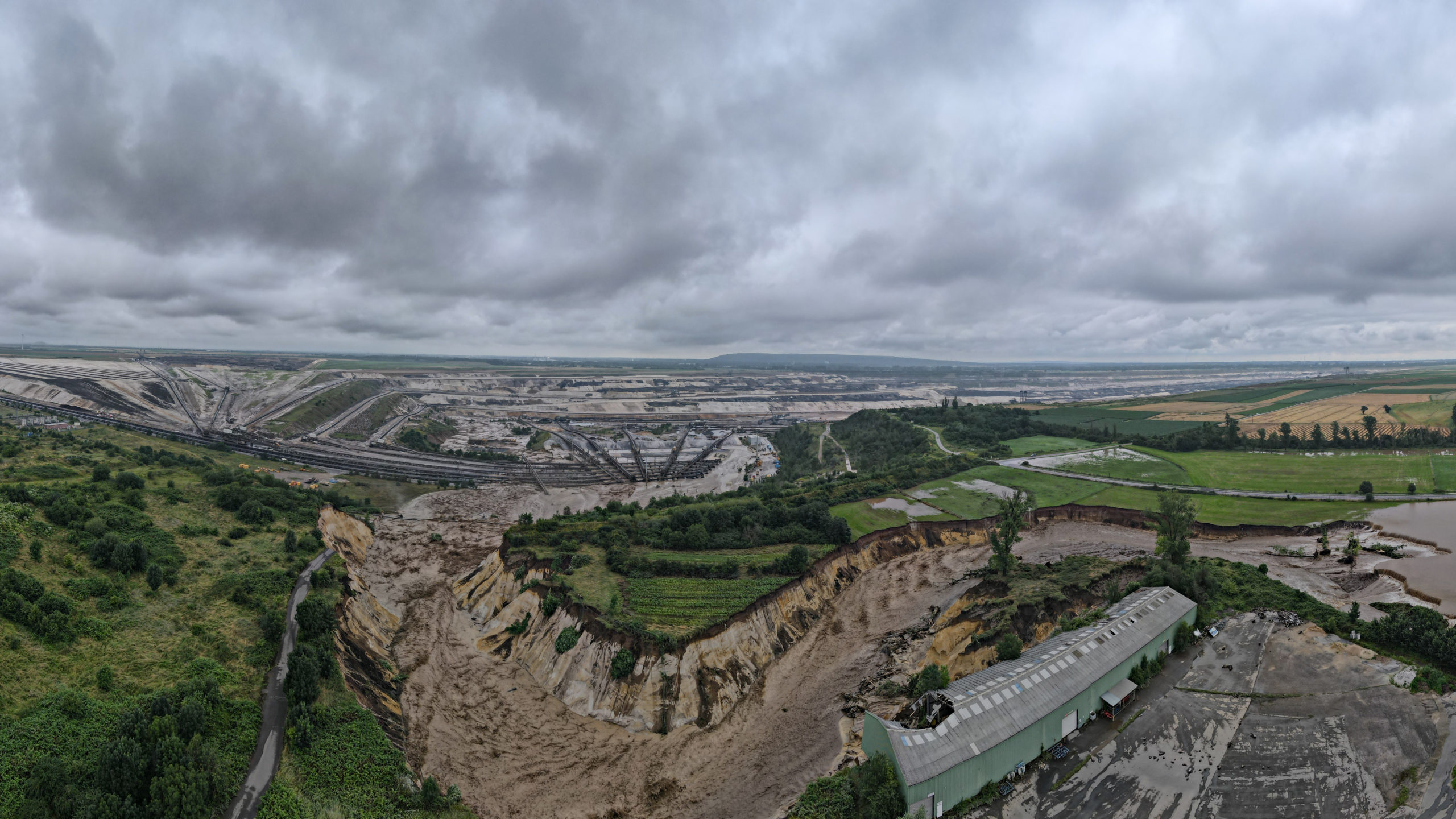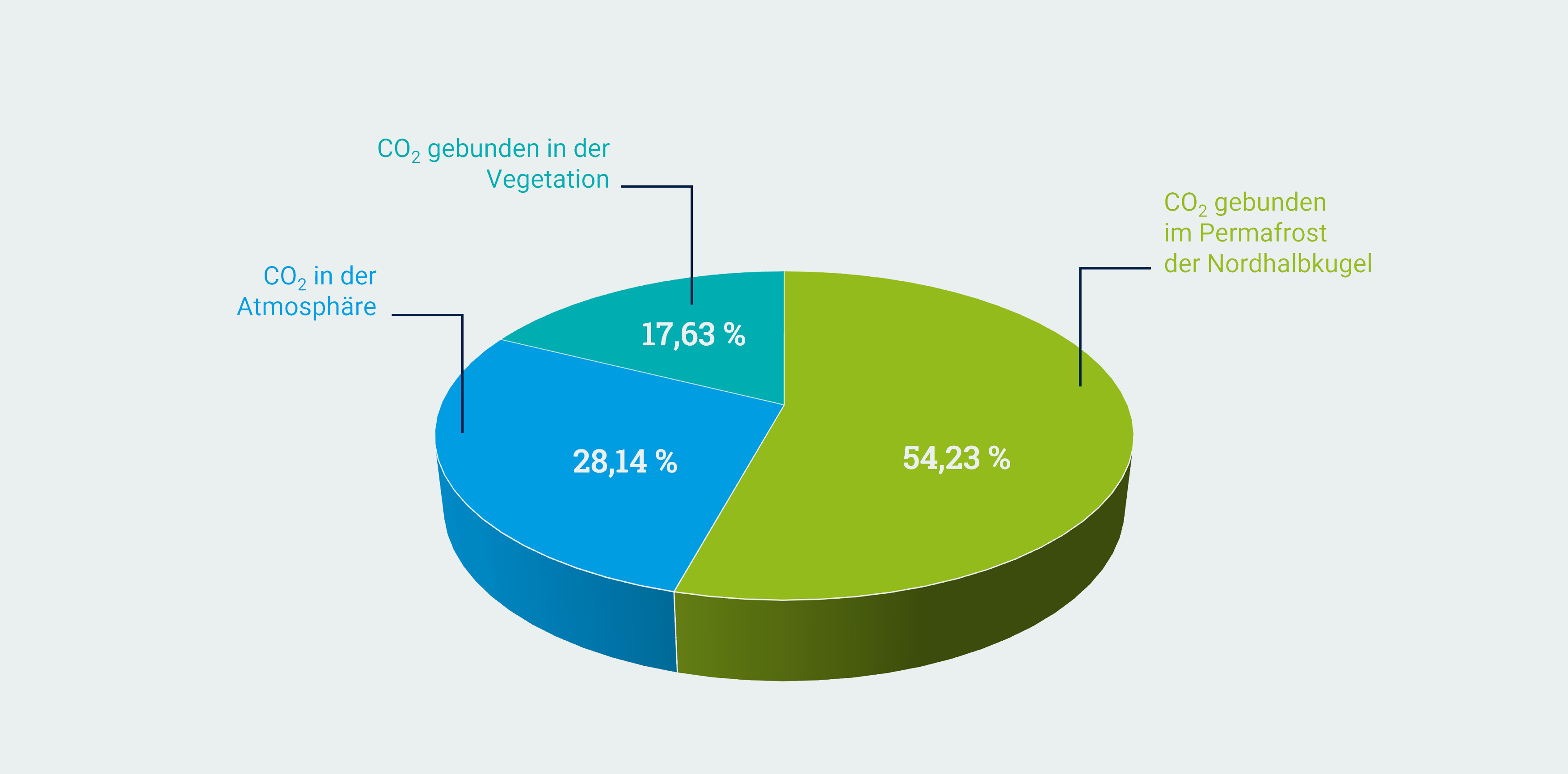Prevent the Reaching of Tipping Points on Climate Change

The flood catastrophe in 2021 has left deep scars. Here you can see the river Inde breaking into the Inden open-pit mine. Photo: Forschungszentrum Jülich/Jansen
Climate change is real, just like the influence of humans on global warming. This is something the overwhelming majority of researchers in this field agree on. “We are seeing a global increase in temperature of 1.1 °C compared with pre-industrial times,” said Prof. Dr. Astrid Kiendler-Scharr back in 2021. The atmospheric researcher sadly passed away far too soon at the beginning of 2023. She had been one of the lead authors of the latest IPCC report on climate change. “The speed at which the temperature is rising is unprecedented. If we take a look at the climate models, the temperature should have remained constant. It is only when we factor in the human effect with greenhouse gases that we can explain the observed temperature increase.”
Kiendler-Scharr went on to say that it is very likely that weather extremes such as the flood disaster in 2021 or the extremely dry years of 2018, 2019, and 2020 will occur more frequently.
We are seeing a global increase in temperature of 1.1 °C compared with pre-industrial times.
Prof. Astrid Kiendler-Scharr

Part two of the HC-H2 series “What is it?”
This time: climate change
To explain it in a nutshell: human activity is the cause of the rapid increase in global temperature. The speed of global warming cannot be explained alone by the climatic fluctuations to which the Earth has been – and continues to be – subjected. The 2015 Paris Agreement has now been ratified by all 195 countries around the world. Its overarching goal is to limit the increase in the global temperature to no more than 2 °C above pre-industrial levels (mid to late 19th century) by 2100, and ideally below 1.5 °C. As things stand, we have seen a 1.1 °C increase in roughly 150 years, and even a 1.6 °C increase in Germany.
By comparison, the biggest catastrophe in the history of life on Earth is a mass extinction event 251 million years ago, which wiped out more than 90 % of all marine species and over 75 % of all land animals. One of the main causes of this were millennia of mega volcanic eruptions in what is now Siberia on a scale that would be unimaginable by today’s standards.
Scientists have repeatedly researched the period of global warming at the Permian–Triassic boundary. Current research suggests that the global temperature has risen by 5–8 °C within 10,000 years as a result of the greenhouse effect caused by volcanic eruptions.
The amounts of CO₂ currently being emitted per year are about 14 times higher than peak emissions during the extinction of the Permian–Triassic boundary.
Dr. Hana Jurikova,
GEOMAR Helmholtz Centre for Ocean Research Kiel
All five mass extinction episodes in the history of life on Earth have so far confirmed a truism that can be heard time and again in the films of the Jurassic Park/World franchise: “Life finds a way.” Life has never been completely wiped out. But during all five mass extinctions, it was always the dominant species that became extinct, while the Earth survived.
Paris Agreement
The 1.5 °C target outlined in the Paris Agreement is based on recognized climate models, which show that mechanisms will be set in motion that can no longer be stopped if global warming increases. An example of this is the thawing of permafrost regions. Many of the Earth’s carbon dioxide and methane sources are bound in permafrost soils and will be released when the ice melts.
This will considerably accelerate the speed of global warming, as methane – just like carbon dioxide (CO2) – is one of the gases that causes a greenhouse effect in the atmosphere. However, compared to CO2, which has been in the atmosphere for centuries or millennia, it is shorter-lived but has a 20 times more damaging effect on the climate. In contrast to current CO2 emissions, humanity would then no longer have any leverage in its attempts to slow down global warming.
Leopoldina paper
This is also the message of a discussion paper compiled by Leopoldina, the German National Academy of Sciences, which advises policymakers and society on scientific issues. Prof. Wolfgang Marquardt, Chair of the Board of Directors of Forschungszentrum Jülich, is a member of Leopoldina and co-authored the paper. The paper is entitled “Den kritischen Zeitpunkt nicht verpassen” (Don’t miss the critical moment) and aims to provide guiding principles for the transformation of the energy system.
The paper begins by stating that a critical moment will
soon have passed in which Germany and Europe can still put in place the necessary conditions to achieve the climate goals of the Paris Agreement. A key lever for achieving carbon neutrality is the transformation of the energy system and the provision of technologies that will enable this worldwide. Decisive action is all the more important, as the consequences of climate change are becoming increasingly noticeable.

The tipping points of climate change
The “critical moment” discussed in the paper refers to the Earth system reaching tipping points on climate change. In the climate models, these tipping points will result in self-reinforcing processes, such as the increased thawing of permafrost and the associated increase in emissions of greenhouse gases like CO2 and methane, that can no longer be stopped. If this were to happen, then a return to current global temperatures would no longer be possible for future generations.
It is therefore vital we prevent these tipping points from being reached. This can only happen with an energy system that works without the emission of greenhouse gases and that is therefore based on renewable energy and carbon-neutral storage methods such as a green hydrogen economy. By working towards such a hydrogen economy, we aim to contribute to the energy transition.


